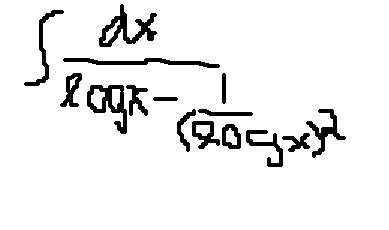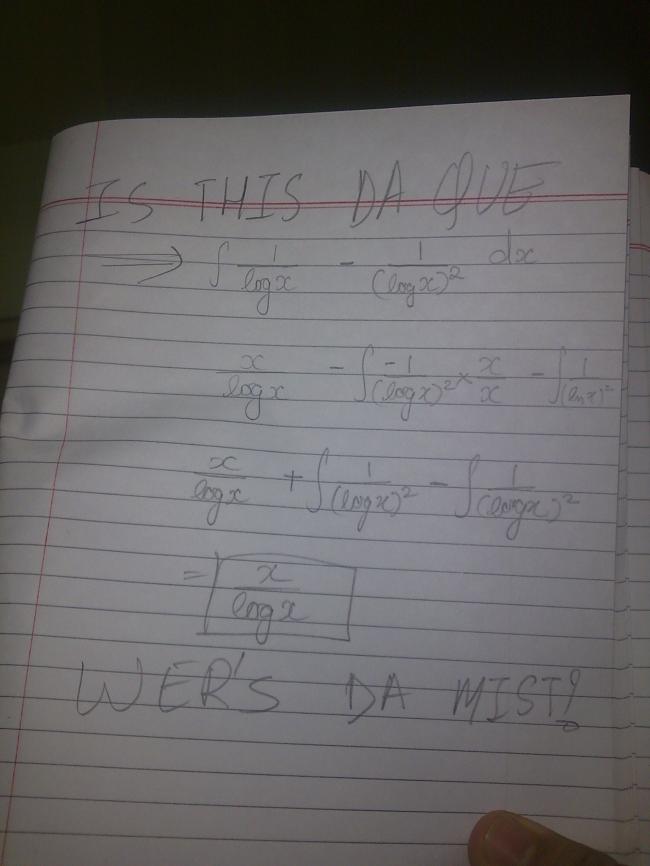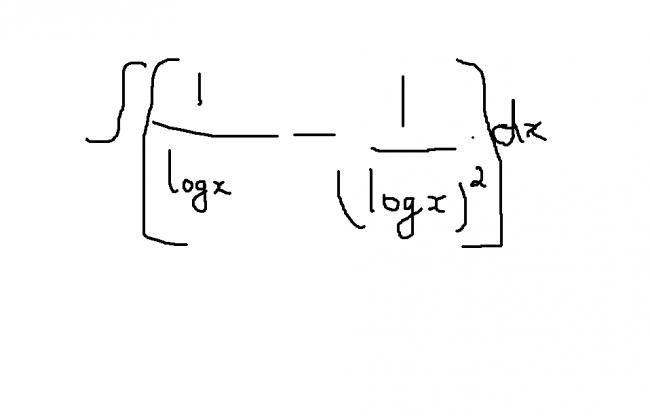 3
3check if the qn is like this

 24
24u did it 3 minutes before
ur post: #23 Posted 00:47am 15-02-09
my post: #25 Posted 00:50am 15-02-09 [12]......is 50-47=15???[11]
 1
1hey eureka i have done 15 minutes before.............[9][9][9]
 24
24i hope u had done that 10 minutes before................[16]
 1
1yaa i knw tapan i was juzz [9][9][1][1]dont be [16][16][16] with me
 1
1Here's another method:
Let logx=t; =>x=et =>dx=etdt
=>I=∫et(1/t-1/t2)dt=et/t
=elogx/logx (For Prajith ;)
=x/logx
 21
21dear prajith......
e^logx = x
ther4 ans = x/logx
c thats y i was tellin give da ans...
my ans and ur ans r da same
 1
1hey ma question is that one only............
 1
1Well Tapan the answer is ........
elogx/logx + C
Where C =Constant
 3
3pls post the correct hand written qn praji
 24
24plzzzzz tell the question first.................clearly....................
 21
211st step is integrat by parts
how did u get WAT???
knowing the answer wudnt de motivate nebody frm tryin....
pl ans de do yaar
 1
1sankara can u juzz check the question........
 1
1hw did u get that tapan.....[11][12][12][12][12][12]
 1
1i'll tell the answer..........yaaa.......sure but let others too try it!!!!!!!plzzz b patient tapan.......[1][1][1][1]
 21
21
wats the ans then???????????
 1
1The question is fine subash...........
 11
11prajith i cant understand the question why are there 2/ signs
correct the question if wrong
 1
1sorry tapan.........[2][2] ur wrong...........
 21
21hey i think i got it......
in 1/log(x)
take 1 as integrable functn.... and 1/lnx as the differentiabl.....
u'll get da 2nd part as ∫1/(lnx)2 so it gets cancelled out by - ∫1/(lnx)2
 1
1not at all ..........no limits.......do it!!!!!!!!![5][7][7][7][11][11][12][12]


